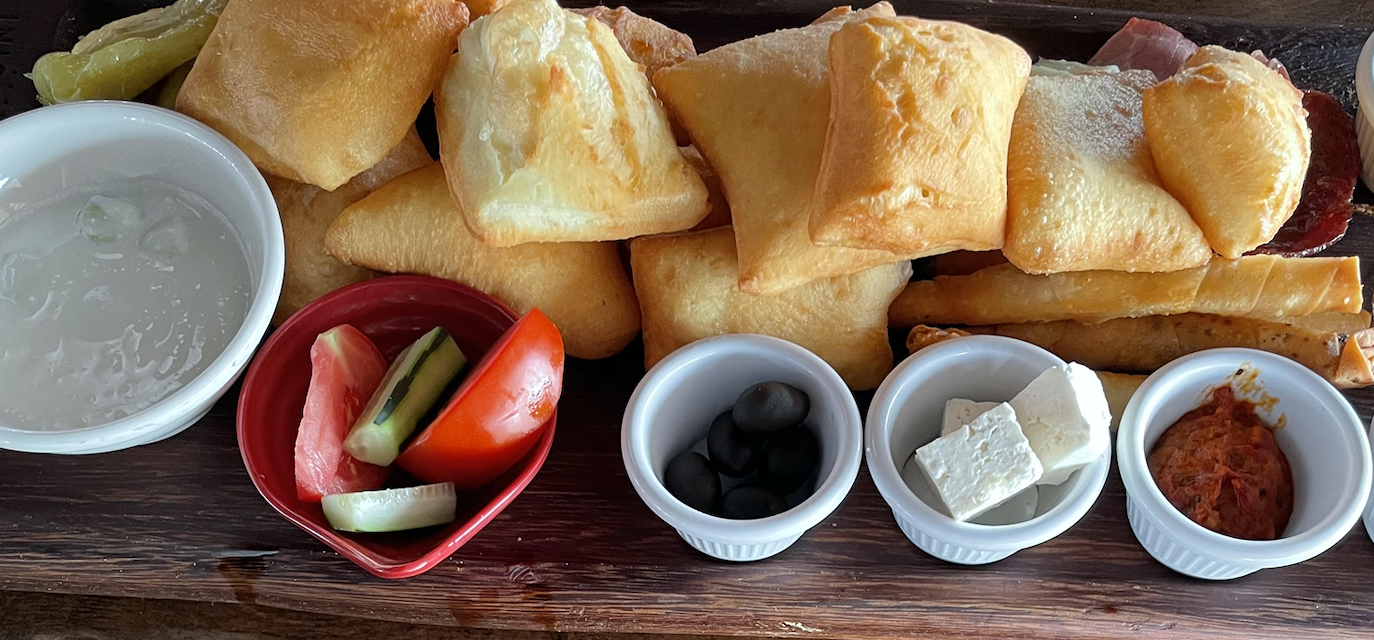The “Berlin Wall” of Kosovo: Mitrovicë North and South (Pt. 1)

Përshëndetje! And happy Friday.
In my last two blogs, I aimed to provide a sense of my daily life in Kosovo and what it’s been like to take part in an international legal internship. As I’ve spent more time here and had the opportunity to travel throughout Kosovo, I wanted to dig deeper into the details of Kosovo’s ongoing post-conflict nation-building, and the enormous work of rebuilding (and building) functional state institutions and an effective justice system. This general subject has been on my mind after a recent trip to nearby Mitrovicë (Mitrovica in Serbian), located in the north of Kosovo. (Given the length of this post, I’ve split it into two parts for easier reading.)
For context on Mitroviceë, my supervisor Anton recently compared Mitrovicë’s political situation to Germany’s division under the Berlin Wall. The town is divided between Albanian Kosovars on the south side (with a population of approximately 80,000 people), and Serbian Kosovars on the north side (about 40,000 people). The city is split geographically by the Ibar River and connected by an infamous bridge, patrolled by soldiers, that connects both sides of the city.
What stood out to me from my visit was that Mitrovicë’s divide is more than geographic or symbolic; there are literally two different governments for the Albanian and Serbian sides. Mitrovicë has been divided since Kosovo’s 1999 war. The ethnic Serbian side in the north does not recognize Kosovo’s government in Prishtinë; instead, the Serbian side of Mitroviceë formed its own assembly, which is aligned with and funded by the Serbian government in Belgrade.
I made the trip to Mitrovicë to visit my friend Shpresa, who works with CLARD and was previously a law professor at Ilaria College in Kosovo. As a Mitrovicë local, Shpresa planned a lovely day of activities for us to take in the city and explore. We started the day on the south side of Mitrovicë with a traditional Albanian breakfast of assorted fresh, flaky breads, with different sauces like ajvar (a red pepper sauce famous throughout the region) and buttery honey, a dish of fried eggs, and several coffees before we switched to red tea served in small hourglass-shaped glasses. This restaurant, Shpresa explained, was in a “neutral” zone between the north and south sides, due to the natural resources beneath that strip and an economic agreement between the Serbian and Albanian sides. After our meal, we walked along the northern-most Albanian side of Mitrovicë before crossing the infamous bridge over to the Serbian side of Mitroviceë. Despite warnings about crossing the militarized bridge, we fortunately didn’t experience any issues. However, Shpresa noted that the military surveillance continued beyond the bridge, and I shouldn’t take any pictures, in case any guards were to stop us and ask questions.
The difference between north and south Mitrovicë is immediately apparent once you cross the bridge. On the south side, where we began our day, you see a typical Albanian Kosovar town, with signage in Albanian and European Union ads and a relaxed café scene. Once you cross over to the north side, however, the official language is Serbian, and everything is written in Cyrillic (fortunately, I can read Cyrillic, which helped a little bit). There are Serbian flags everywhere, as well as graffiti works honoring the Serbian forces that fought in the Kosovo war. Also, you can only use the Serbian currency of dinars, which rendered our euros useless for this excursion. It was also apparent that the north side was relatively impoverished compared to the southern Albanian side. This makes sense when you consider the physical and economic isolation of the north side, but still feels arbitrary and tragic, given the human toll.
Our time on the north side was brief. But the hostility toward my Albanian friend came through, anyway. That day, Shpresa happened to have on a Kosovo-shaped necklace that she forgot to hide before we crossed over into north Mitrovicë. I’m not sure if it was our imaginations, but the two of us noticed a chilly reception in all the places we entered, including a shopkeeper that seemed to want to deliberately misunderstand Shpresa’s tea order (we left empty-handed). Without the right currency to get around, we limited our visit to a quick stroll through the north side’s downtown area and stopped in a few shops. The north side is known for having lower prices for consumer goods than the south side; this is one reason people from the ethnic Albanian south will cross over.
After we returned to the south side, Shpresa and I determined it was time for another coffee, and then I had to return to Prishtinë. It wasn’t a long distance, but the rush hour traffic was brutal, and it took about an hour and a half to get home.
***This post is continued in part two.***